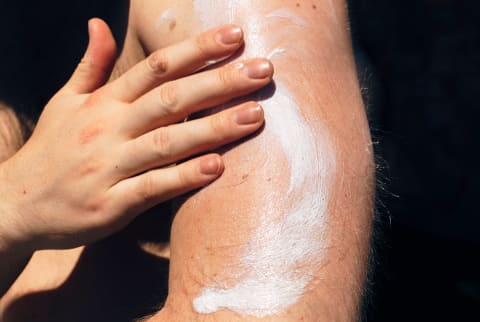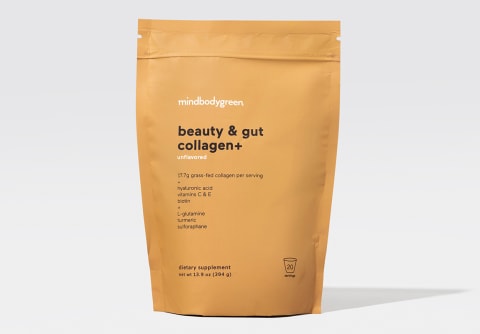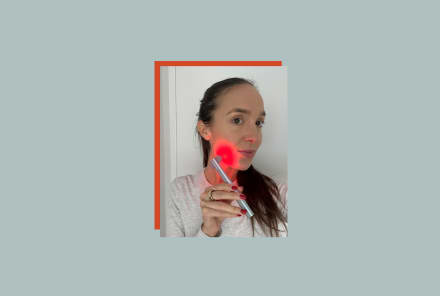Advertisement
What SPF Number You Should Actually Be Looking For, According To An Expert


I get asked a lot of questions about SPF, and unfortunately, I'm not that great at answering them. Why? Because using sunscreen in real life is complicated, and there's actually conflicting information on how we can best protect ourselves from excessive sun exposure and UV damage. This is exactly what I spoke about with George Zaidan, MIT-trained chemist, science communicator, and author of the book Ingredients: The Strange Chemistry of What We Put in Us and on Us. He wrote a whole chapter on SPF and has read almost all the relevant literature on sun care and sunscreen efficacy.
And in an episode of Clean Beauty School (I do recommend giving it a full listen), we spoke at length about the number you should get when choosing a sunscreen. He had a lot to share.
How SPF numbers are determined.
I actually think it's very important to understand the process of how sun protection factor (SPF) is decided as part of your larger understanding of how you should go about picking an appropriate sunscreen. See, the common misconception of SPF is that it's an intrinsic value—if you add X or Y ingredients at a certain percentage, you'll get Z number. And while you can pretty accurately guess what the SPF will be based on the formula, it's not the final decider.
"What happens is they find a pasty white person, and they put them in a lab. On this person's lower back, they'll smear a very specific amount of the sunscreen they're testing and wait for it to dry. Then they take a stencil with two rows of squares cut out and put it on the person's back. Now we have two rows of squares over the skin—one protected by sunscreen, the other not," he says. "Then they put UV light on the back, with different levels of intensity. Basically what they're looking for is how much UV light does it take to just barely give this person a sunburn on the un-sunscreened row versus the sunscreened row. Now let's say it takes 30 times as much UV light to give this person a sunburn with sunscreen versus without sunscreen, that sunscreen is SPF 30."
But here's the thing: Lab settings do not equal real life. And because people rarely apply the same amount of sunscreen as they do in these tests—and don't let it dry properly after, sweating while wearing it, and also experiencing different levels of sun exposure—the sunburn protection factor listed is likely not what you are experiencing in real life. "All of those differences mean that you're basically guaranteed to not get the protection of the exact SPF number that you're seeing on the bottle," he says.
How to pick an SPF according to the available research.
Another common misconception: Anything higher than SPF 30 is overkill, as there's a marginal difference between protection. (This line of thought came after a study a few years ago basically concluded the above—however, according to Zaidan, that's a misinterpretation of the data.) There's also the argument that when people use higher SPF, they trick themselves into thinking they're protecting themselves better and then don't apply and reapply enough. (And we know that user behavior with sunscreen is iffy at best, so there is certainly justification for this argument.) But here's what we know according to the available evidence and our insights into how people actually use sunscreen on a daily basis.
"I see this advice all the time, that if it's over SPF 30 it doesn't really matter," he says. He goes on to explain that the reason people give this advice is because if SPF absorbs 97% of UV rays and SPF 100 absorbs 99%, that's only a 2% difference. "But here's why that's wrong: We're focused on the wrong number. The important thing is not how many photons from the sun you're turning away—the important thing is how many photons get through, right? So if we look at it through that lens, SPF 100 lets in 1% of UV light, while SPF 30 lets in 3%. So SPF 100 is actually roughly three times better at preventing sunburn than SPF 30."
So that's the science behind the numbers. But again, this doesn't always translate to real-life usage. "So what does this mean—we should all switch from 30 to 100? It's a much more complicated question than that because many people will end up using it as an excuse to do whatever you want in the sun," he says. "Don't let sunscreen be your excuse to overdose on sun exposure."
Then, of course, there's the question of application. As we know, SPF is entirely dependent on how you apply it. And since many people aren't applying it correctly—about 1 ounce for the body, letting it dry for 15 minutes, and then reapplying after getting wet or every two hours, according to derms—Zaidan recommends adjusting the number in your head. "My personal rule of thumb is like, whatever you see on the bottle, divide by like two or three, and that's probably the effective SPF you're experiencing."
Watch Next
Enjoy some of our favorite clips from classes
Enjoy some of our favorite clips from classes
What Is Meditation?
Mindfulness/Spirituality | Light Watkins
Box Breathing
Mindfulness/Spirituality | Gwen Dittmar
What Breathwork Can Address
Mindfulness/Spirituality | Gwen Dittmar
The 8 Limbs of Yoga - What is Asana?
Yoga | Caley Alyssa
Two Standing Postures to Open Up Tight Hips
Yoga | Caley Alyssa
How Plants Can Optimize Athletic Performance
Nutrition | Rich Roll
What to Eat Before a Workout
Nutrition | Rich Roll
How Ayurveda Helps Us Navigate Modern Life
Nutrition | Sahara Rose
Messages About Love & Relationships
Love & Relationships | Esther Perel
Love Languages
Love & Relationships | Esther Perel


















